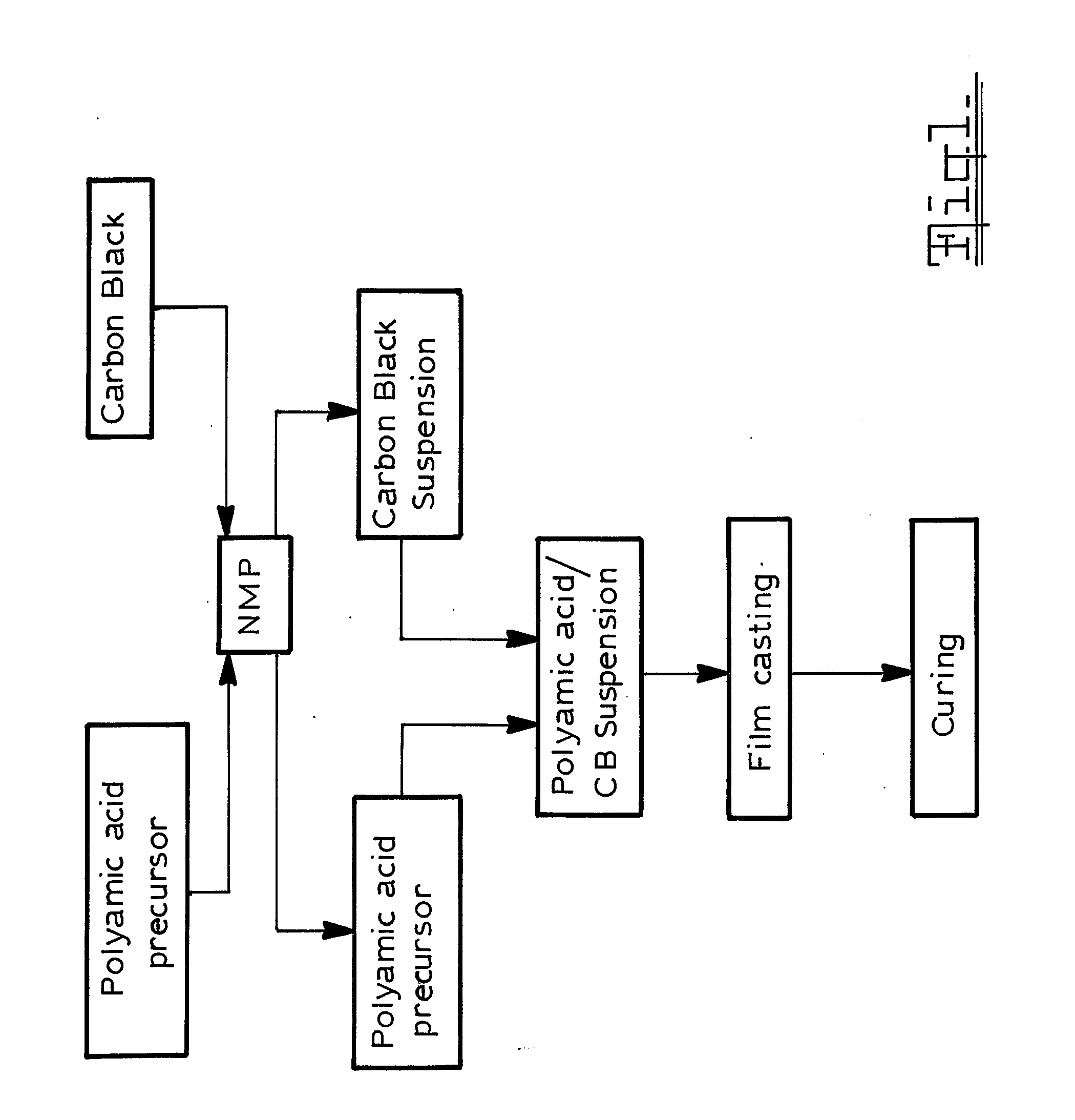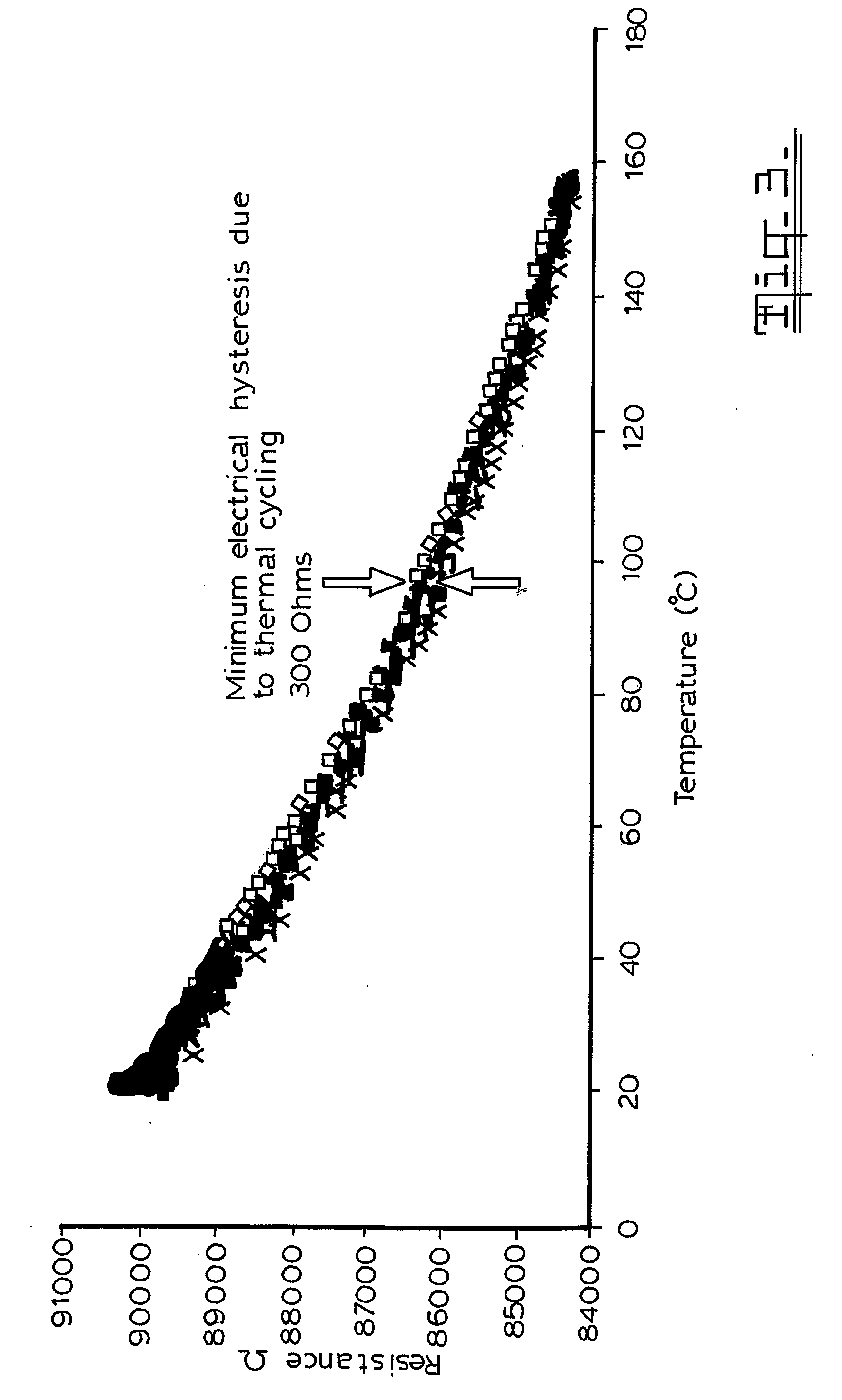Polymeric Strain Sensor
a technology of polymeric strain and sensor, which is applied in the direction of organic conductors, non-conductive materials with dispersed conductive materials, conductive materials, etc., can solve the problems of micromechanical hysteretic dislodgement, and achieve the effect of convenient manufacture and us
- Summary
- Abstract
- Description
- Claims
- Application Information
AI Technical Summary
Benefits of technology
Problems solved by technology
Method used
Image
Examples
Embodiment Construction
[0020]FIG. 1 illustrates the fabrication steps used in one embodiment of this invention;
[0021]FIG. 2 illustrates the variation of electrical conductivity with carbon content at 20° C.;
[0022]FIG. 3 illustrates Temperature Dependent electrical resistance variation between a free standing and a supported film;
[0023]FIG. 4 illustrates the electrical hysteresis due to thermal cycling;
[0024]FIG. 5 illustrates typical micromechanical behaviour of the sensor of this invention compared to the unfilled polymer;
[0025]FIG. 6 illustrates typical electromechanical behaviour of the sensor of this invention;
[0026]FIG. 7 illustrates the strain resistance change and the gauge factor of the sensors of this invention;
[0027]FIG. 8 is a schematic representation of the carbon fibre composite rowing Oar showing the locations of the SSEs that were placed along the axis of the Oar;
[0028]FIG. 9 is a graph of resistance ratio plotted against time obtained for the strain sensor elements during cyclic deformatio...
PUM
 Login to View More
Login to View More Abstract
Description
Claims
Application Information
 Login to View More
Login to View More - R&D
- Intellectual Property
- Life Sciences
- Materials
- Tech Scout
- Unparalleled Data Quality
- Higher Quality Content
- 60% Fewer Hallucinations
Browse by: Latest US Patents, China's latest patents, Technical Efficacy Thesaurus, Application Domain, Technology Topic, Popular Technical Reports.
© 2025 PatSnap. All rights reserved.Legal|Privacy policy|Modern Slavery Act Transparency Statement|Sitemap|About US| Contact US: help@patsnap.com



